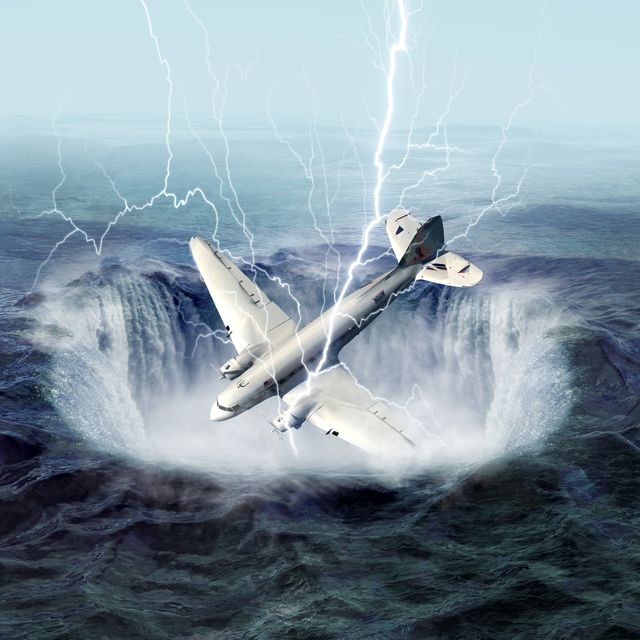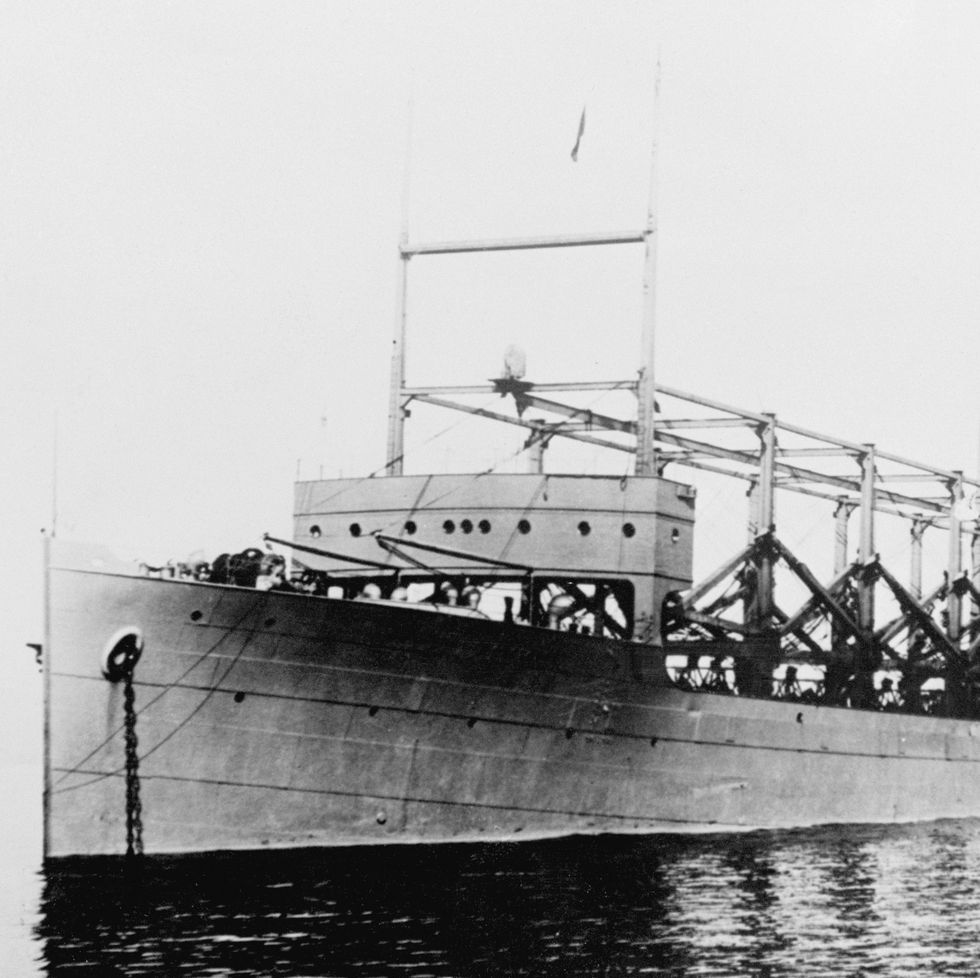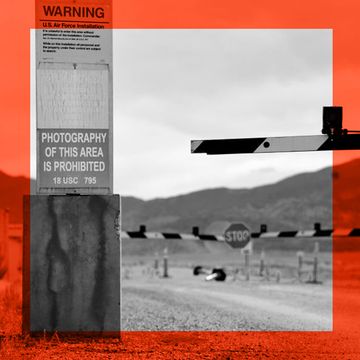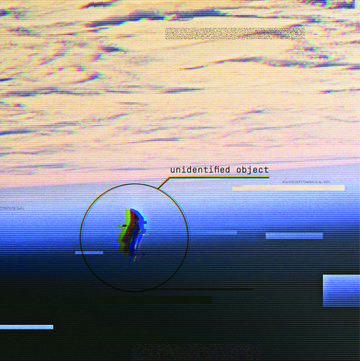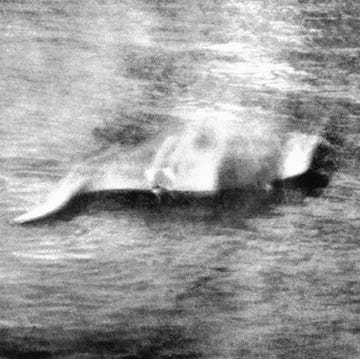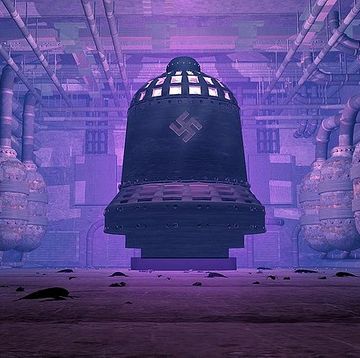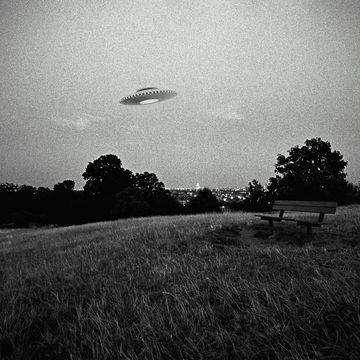- The Bermuda Triangle, located in the South Atlantic between Florida, Puerto Rico, and Bermuda, is thought to be an epicenter of shipwrecks and plane crashes.
- Theories behind the rash of tragedies run the gamut from supernatural causes, like aliens and time warps, to extreme weather events like waterspouts and rogue waves.
- According to the U.S. Coast Guard and NOAA, there is no evidence that ships or planes disappear more frequently in the Bermuda Triangle than they do anywhere else in the world.
Fourteen men in five torpedo bombers. Thirty-one passengers aboard a commercial flight. A U.S. naval ship carrying 306 men. All are victims of the so-called “Bermuda Triangle” (see sidebar), an area of the South Atlantic bounded by Miami, Florida; San Juan, Puerto Rico; and the island of Bermuda.
The first mention of the Bermuda Triangle—sometimes called the Devil’s Triangle—came in 1964, when a writer named Vincent Gaddis cataloged the many catastrophes that had taken place there since the late 1800s in a pulp magazine called Argosy. Ten years later, paranormal enthusiast Charles Berlitz released a best-selling book about it, aptly named The Bermuda Triangle, which went on to sell more than 14 million copies.
🌊 You love our weird world. So do we. Let’s explore it together—join Pop Mech Pro.
Since then, the Bermuda Triangle has taken up permanent residence in our collective imagination, growing to become a term synonymous with mysterious disappearances and tragedies. Today, there are more conspiracy theories about the Bermuda Triangle than there are ships in the sea; here are seven of the most common.
Atlantis
It was Charles Berlitz himself who forwarded the idea that the lost city of Atlantis was somehow responsible for the shipwrecks and plane crashes in the Bermuda Triangle. Since then, others have piled on to this theory, arguing that technology developed by Atlanteans—including crystal energies—is still active on the seafloor, causing mechanical malfunctions in the boats and planes above. The biggest flaw in this theory, of course, is that Atlantis isn’t real.
Rogue Waves
A rogue wave is an unusually large and unpredictable swell of water, typically twice as tall as the waves around it. A few years ago, scientists at the University of Southampton in England claimed that the waters of the Bermuda Triangle were especially ripe for rogue waves due to storms moving in from all sides. Some of the waves, the researchers posited, could reach 100 feet in height. While the scientists’ work garnered a ton of attention, it couldn’t explain what would cause an airplane to crash in the Bermuda Triangle.
Magnetic Forces
The Bermuda Triangle is one of two places on Earth where a compass will point to true north instead of magnetic north. While true north is the fixed point where lines of longitude converge on a map, magnetic north is constantly shifting; it’s the point on Earth’s surface where its magnetic field points directly downward. The difference between the two is called “declination,” and all trained ship and airplane pilots know to account for it when charting their course.
So, the conspiracy theory that compass malfunctions are behind the Triangle’s grisly history is easily debunked. First of all, it assumes that many experienced pilots were simply unaware of magnetic declination. Second, it can’t explain the many, many boats and planes that pass through the area without incident.
Aliens
No surprises here: where there are conspiracy theorists, there are usually UFOs. In this case, the story goes that aliens use the Bermuda Triangle as a portal to our planet. There, they gather the people and technology they need to conduct their research on our species. This theory explains why many of the ships and planes that go down in the Bermuda Triangle are never recovered.
Methane Bubbles
In 2016, a group of researchers from The Arctic University of Norway announced that they had discovered massive, half-mile craters at the bottom of the Barents Sea off the coast of Norway. The craters, they hypothesized, were caused by sudden explosions of deep, underwater deposits of methane.
Lots of conspiracy theorists glommed onto the idea, arguing the phenomenon might be responsible for shipwrecks in the Bermuda Triangle. However, just a few months later, the researchers themselves burst that bubble, as it were. “We are not making any links to the Bermuda Triangle,” they said in a 2016 statement published by the Centre for Arctic Gas Hydrate, Environment, and Climate, a coalition of scientists that investigate Arctic marine geology.
Wormholes
Could the Bermuda Triangle be a portal to another space and time? A pilot by the name of Bruce Gernon says it is. “I didn’t believe in time travel or teleportation until it happened to me,” Gernon says. The pilot alleges that a “fog surrounded my craft and I leaped ahead 100 miles.” Don’t believe it? Luckily, Gernon “documented what happened and memorized every detail of that flight,” publishing a book about his experience in 2017.
Waterspouts
According to NASA, waterspouts are spinning columns of moist air that form over warm water. Akin to a tornado in the ocean, waterspouts can feature wind speeds of up to 125 miles per hour. Because the Atlantic Ocean off the coast of Florida is one of the most active areas in the world for this severe weather phenomenon, some have posited that they could be responsible for Bermuda Triangle disasters.
While unproven, this theory may be the closest to the truth, as the United States Coast Guard and the National Oceanic and Atmospheric Administration have both stated that any mishaps in the area were likely caused by bad weather and inexperienced navigators. At the same time, both agencies asserted that there’s nothing that special about the Bermuda Triangle at all:
“The ocean has always been a mysterious place to humans, and when foul weather or poor navigation is involved, it can be a very deadly place. This is true all over the world. There is no evidence that mysterious disappearances occur with any greater frequency in the Bermuda Triangle than in any other large, well-traveled area of the ocean.”
Ashley Stimpson is a freelance journalist who writes most often about science, conservation, and the outdoors. Her work has appeared in the Guardian, WIRED, Nat Geo, Atlas Obscura, and elsewhere. She lives in Columbia, Maryland, with her partner, their greyhound, and a very bad cat.
